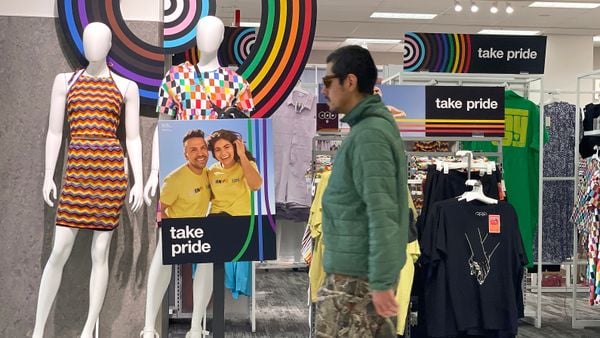The following is a guest piece by Celia Hoag and Kelly Watson of Merkle. Opinions are the authors’ own.
Our phones are filled with mobile apps that help us do anything from ordering lunch to managing finances or tracking our heart rate. Apps provide convenience and generate engagement that other channels can’t deliver − and with 485,000 mobile apps being downloaded every minute, it’s clear consumers recognize the benefits they provide as well.
With mobile site views accounting for approximately half of web traffic worldwide and users spending seven times more time in apps than in a browser, mobile apps have quickly become an invaluable channel for brands to leverage when reaching customers. They develop deeper customer relationships, increase revenue and gather first-party data in ways brands couldn’t before.
Ultimately, mobile apps are an essential component of omnichannel strategy as customers demand personalized experiences throughout their journey. To create an effective app, brands must invest in three core principles: strategy, design and optimization.
Strategy driven by value proposition
Developing a strategic value proposition for a mobile app starts with clearly outlining your target audience, defining the brand’s app differentiation, and outlining core benefits in support.
- Target Audiences: Brands should first identify the target audience for the mobile app channel, which tends to be their most loyal customers. Trying to use a channel to appeal to all users’ needs can muddy the channel’s purpose and result in meeting nobody’s needs. Best-in-class experiences and applications focus on a specific target audience and build features, messaging and content tailored to them.
- Unique Value Proposition: Once the audience is defined, value propositions must be uniquely differentiated based on that target audience’s needs. A clear value proposition supported by direct differentiators drives consumer behavior toward a swifter conversion and stronger retention.
- Core Benefits: Lastly, the app's core benefits need to support the strategic value proposition. Users will not download an app that does not provide utility value for a specific purpose, whether it is entertainment, health, productivity or informational. Uninstall rates are the highest within the first week, and if users do not find the promised value proposition and benefits meet their expectations then they will delete the app.
A brand that does this well is Nike. They have created an experience with a community-based strategy to encourage engagement around their most active consumers. They reward app users with exclusive access to limited-edition releases and early product launches. This core benefit delivers exclusivity and fosters a sense of community and excitement among this specific audience, incentivizing them to engage with the app regularly.
Human-centered design
Human-centered means the design is aesthetically pleasing, easy-to-navigate and an intuitive experience for the brand’s customer. The only way to understand what is “intuitive” to your customer is through thoughtful research and discovery early in the app development process. A human-centered approach has a few key principals to make it successful:
- Simple design: This includes colors, text and shapes that are consistent across the application to aide in an intuitive experience while engaging users.
- Accessibility: Accessibility is not just a legal requirement — it often benefits all users by removing clutter, noise and distractions to drive to the next best action. Following accessibility requirements also increases brand reputation, customer loyalty and positive user feedback.
- Usability: Perhaps most importantly, an app must be helpful or useful. Brands must weigh the internal desire for a mobile channel with their customers’ behaviors and expectations to ensure that the utility of the application is being met.
Chipotle is a great example of a brand app that was designed for ease of use and intuitiveness from the ground up. The app offers features like saved favorites, personalized promotions and a seamless experience from in-store to app. For example, the ordering process mimics the experience of building your meal in person at a restaurant, including the ability to customize any aspect of your order. Brands that begin with human-centered design best practices have a jump start on their competition.
Optimization via continuous innovation
Brands should use mobile apps to push the boundaries of what's possible to stand out from their competitors. For brands to be at the forefront of innovation and disruption in their industry, it’s essential for them to focus on continuous optimization through iteration, testing and feedback within their apps.
- Iterate: Users understand small issues with new releases, but their expectations must be met with newer versions. Iterating on versions before release allows mobile developers to create more stable and reliable applications.
- Test: Testing features and functionalities is one of the best ways to increase performance and satisfaction from users. A/B testing, interviews and usability tests are all opportunities to refine features, remove low-value features and remain focused on the app’s value proposition and core purpose.
- Feedback Loop: A feedback loop with data is more than a review of insights, it’s an action plan to make improvements. By taking a pause to understand the insights derived from data analysis, creators can improve performance, responsiveness and load times and reduce the inefficiency of internal resources to support bloated applications.
It is obvious when brands invest in optimization to improve user experience and create a standard in the app space. For example, Robinhood has a team of UX researchers testing the user experience and consistently offering updates with new features and improvements. Robinhood does an amazing job of keeping the app relevant and responsive to user needs while not frustrating users with constant navigation changes.
Mobile devices have become a human extension, and our attachment makes mobile apps an invaluable channel for reaching consumers. They provide the opportunity for brands to create more personalized experiences, develop deeper customer relationships, increase revenue and gather first-party data. When brands invest time in comprehending their app's value to their audience, prioritize an intuitive design and commit to ongoing optimization, they can fully unlock the myriad benefits this channel has to offer.












